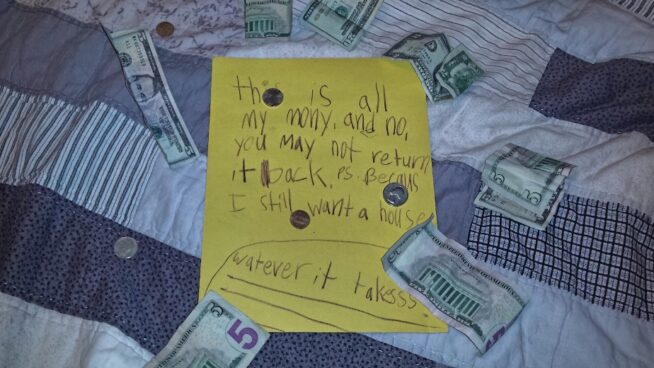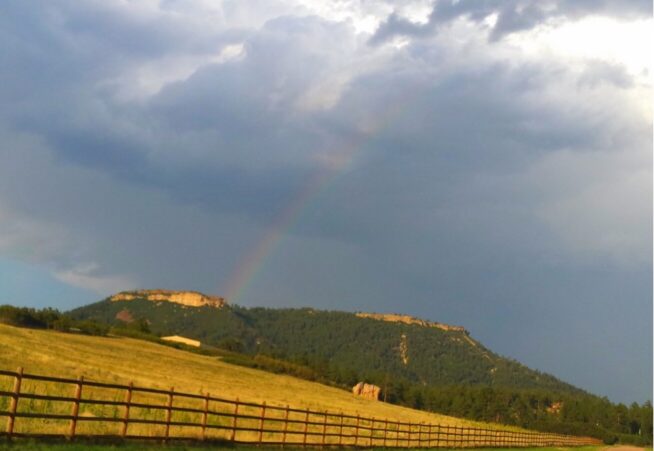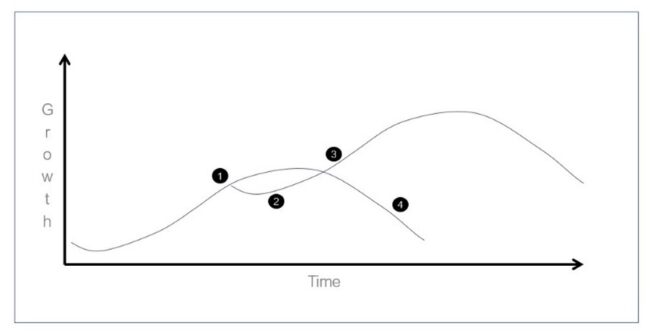Sensing the Move
It begins with an unsettled feeling. What once felt right and normal, doesn’t anymore. Nothing changed, or did it? After some reflection, you conclude subtle changes have been occurring for a long time and now you are realizing their cumulative effect. You feel compelled today to do something about it and sense a critical decision point is upon you.
A critical decision point (CDP) is a short duration of time where we have the agency to make a choice having a lasting impact on our domains (personal, family, work, community).
As a CDP draws near, we do well to prepare ourselves for the inevitable change. In the simplest of terms, our choice might be to stay the course or alter our current trajectory. Regardless, the result will have lasting affects; propelling us on to new growth opportunities or towards a path of decline and eventually end.
Initiating the Move
Ever struggled with timing a move? Most of us do. Life goes by so quickly, we may develop FOMO; the fear of missing out. Fortunately, each new day presents a fresh set of opportunities.
Sometimes leaders shake things up. Other times, they just harness the uncertainty that surrounds them. ~ Kouzes and Posner from The Leadership Challenge
CDP attributes
However, CDPs don’t present themselves every day. One could not classify them as good or bad. We should respect their power. As we do, we can harness their energy to propel us to our next phase of growth.
Examples may include accepting a new job, what to study at university, moving to a new city, our response to a tragedy, an adoption, taking a loved one into our home, or choosing to accept medical treatment for an ailment that will eventually kill us, anyway. A CDP is like a fork in the road; our response will have a lasting impact on our future.
The forced move
It forces much upon us like waves crashing against a shore. The shore knows they are coming at regular intervals, but not always at the same time every day. With as much effort and determination as we may have, we cannot stop them. They keep coming; doing what they were meant to do.
Change can be delivered through external pressures. Many of us can sense it coming. It can be identified by an unsettled feeling inside us spurring the desire to do something different. When we are given the chance to affect our path, we should do our best to pay close attention and choose well.
What do you do when you accept change is needed, but you are unclear about the final destination?
Circumstance may force upon us a CDP. We may experience a tragic life event or encounter circumstances far outside our ability to influence. I like Jenny Blake’s definition of a crisis from her book Pivot.
“Certain events happen to us and they require space for patience, compassion, grief, and sometimes therapy or spiritual guidance in order to heal.”
When we get to choose
Recently, I was thumbing through a book by Bob Buford, author of Half Time.
The founder of the Half Time Institute referred to the work of Charles Handy and the Sigmoid Curve. I explored a bit and found the curve offers us a visualization of how we grow and what may happen if we choose not to.
The Sigmoid Curve
Using the well-known Sigmoid Curve let’s explore how it might offer context in how we manage critical decision points.
(1) Critical Decision Point (CDP)
During our current growth period, we sense it won’t continue indefinitely. Wise leaders begin experimenting by learning something new while on their current path. They lean into curiosity; investigating new opportunities and ideas.
We see this is how some most admired leaders grow their careers by taking what they know and applying their understanding to new domains. It is their behavior that creates the next growth path.
Take Elon Musk, for example. He founded Zip2 which provided a searchable business directory. Compaq purchased it; earning Musk $22M. He took what he learned and formed X.com which later merged with Confinity to become PayPal.
(2) Path-to-Growth
The Path-to-Growth doesn’t typically start out easy. That is because it might mean a new way of thinking, technology, or process to master. You get it.
Learning the new takes extra effort. As we gain our footing we begin our transition from the old to the new; investing more energy in our new endeavor allowing us to leave behind the former.
(3) Growth
We like this stage as we are growing personally and professionally in the new area. As we do, our new work begins to reflect our identity. At the start, we didn’t think we could do it. We thought maybe we were an impostor. Now each day we improve and are seeing ourselves move from apprenticeship to mastery. The cycle repeats. Eventually, the unsettled feeling returns as a new CDP unfolds on the horizon.
(4) The Decline
What if we don’t accept the change?
Whatever we used to do and the way we went about it will fade. Holding on too long we should expect to decline. It isn’t too late, but the transition to new growth may feel like more of a leap when we are finally ready. Fortunately, when we successfully make the transition, it will feel like more of a relief. We might even say to ourselves, “Whew! I wish I would have done that sooner.”
A Real-Life Example
Need a true-to-life application of what this looks like? Let me tell you a story.
The carriage house
After 10 years of living in the same family home, we felt it was time for a change. With our daughter’s school nearby we didn’t want to move too far away, we didn’t have money to build a dream home and we weren’t excited about apartment living. For us, it wasn’t a financial decision, but a personal one. We needed something different, a transition providing an opportunity to bond and grow closer. We sensed a critical decision point and chose a new path-to-growth.
Back then, a family friend recently made a carriage house available on their property. It was just 2 bedrooms and outside of the town where we live, out in the woods. We would be living above two horses, two goats, two cats, and eventually seven chickens. The rent was right giving us precious time to search out our next home. We signed the lease.
Growth during a time of transition
Moving from a family home of over 10+ years provided time for deep reflection. Living our lives in closer proximity for many months, a new environment, and more time spent outdoors, it disturbed our regular routine in many healthy ways.
We experienced new challenges too. For instance, sometimes were difficult as bids placed on several homes ultimately didn’t work out.
While she didn’t know it, our daughter helped me clarify my thoughts concerning leading and following. As a follower, she helped and was supportive of the move. She leaned in and enjoyed our transition time discovering the woods, playing with the animals, and applying her creativity in new ways.

Image by author
As a leader, she helped us recognize the next CDP. Something she did helped us realize our transition would soon come to an end. She wrote us a note and gave us money to help spur us on to get our new house. One night she came and carefully placed both on our bed. She was “all in” on identifying a new path-to-growth.
Don’t stay too long
Had we remained in the carriage house too long, the growth we experienced could have turned negative.
Arrive at Your Destination
A storm passed our carriage house, and a rainbow appeared. An appropriate signal that our time in the woods was ending. Sellers in a nearby town accepted our offer. We would move to our new home in a few weeks.

Image by author
Lesson learned
The best leaders have a method in how they introduce change. We leaders owe it to our teams to consistently show the way with confidence and positivity as we light the path through times of uncertainty.
Fear is good. Like self-doubt, fear is an indicator. Fear tells us what we have to do. ~ Steven Pressfield
We understand most life outcomes are not certain. Acceptance of our situation today gives us the room we need to navigate the environment. We can inspire and encourage our people by providing a positive outlook and giving them our unwavering commitment to bring them to the other side. As we do the work, we learn and grow; perhaps bringing us closer to doing something amazing.
Last Thoughts
How many times do we second guess our decisions? Too many to count. We were all happy to have taken the journey and equally glad when it concluded.
Following a rainbow will neither lead us to our destination nor a pot of gold. When we see one from where we stand, their appearance makes our hearts glad. They affirm a difficult time has passed making way for a brighter future.
After eight months, our transition period ended. We didn’t need to spend our daughter’s piggy bank money to make the down payment. We enjoyed the adventure as we embraced the change, frustrations, and eventual conclusion bringing us to our new home. We are happy to report that we have arrived at our next stopping point!
When we receive that unsettled feeling as we approach the next key decision point, we feel confident in our ability to make the right move.
 Eric Peterson currently serves as technical program manager for a Fortune 500 Financial Services Company in Denver, Colorado. In addition to his job, he volunteered to form a team that employed servant leadership principles to architect a sustainable model supporting 730 employees. The community encourages staff driven initiatives in areas that include innovation, fellowship, and personal development. He earned a BS in Finance from the University of Nebraska and a MA from Webster University in Information Technology and Resource Management. He is a values-centered leader that equips people to lead more effectively through employing servant leadership principles. He also writes a weekly blog on leadership and team building found at www.shepherdingheart.com.
Eric Peterson currently serves as technical program manager for a Fortune 500 Financial Services Company in Denver, Colorado. In addition to his job, he volunteered to form a team that employed servant leadership principles to architect a sustainable model supporting 730 employees. The community encourages staff driven initiatives in areas that include innovation, fellowship, and personal development. He earned a BS in Finance from the University of Nebraska and a MA from Webster University in Information Technology and Resource Management. He is a values-centered leader that equips people to lead more effectively through employing servant leadership principles. He also writes a weekly blog on leadership and team building found at www.shepherdingheart.com.
Image courtesy of Andrea Piacquadio.













